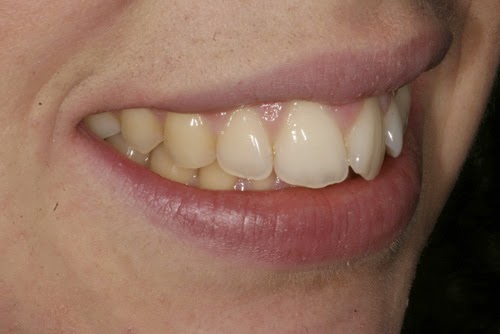 The importance of good planning and preparation
The importance of good planning and preparation
As discussed in the first part of this blog - What is Smile Designing?, the key to Smile Designing is in the planning.
Evaluation and Assessment
Your dentist will first make a full assessment of all components which contribute to your smile. It is important to consider how, not only your teeth, but also your facial features and gums contribute to your overall smile.
While your dentist will discuss and seek to address aspects of your smile which you dislike and want to change it is important to make a full assessment so that the end result will be in harmony with your facial features, age, gender and personality.
While your dentist will discuss and seek to address aspects of your smile which you dislike and want to change it is important to make a full assessment so that the end result will be in harmony with your facial features, age, gender and personality.
You can think of it in terms of the way architects design and plan a building. They will not consider the more cosmetic features first, such as the windows and balconies. First importance should be given to the overall structure and foundation. In the same way, in Smile Designing, the aim is to create a smile which will be functional and lasting, not only nice to look at.
Any underlying dental or gum problems will also need to be diagnosed and treated first. There is no point designing beautiful crowns or veneers and placing them on teeth which have hidden decay or will become loose in future due to gum problems.
Several diagnostic aids may be used in evaluation and assessment:
Facial Assessment
If the are discrepancies in the proportions, alignment or symmetry of the face this will affect the smile.

For example, some people have a discrepancy between the size of the upper and lower jaws in relation to each another. In more severe cases adjustments to the teeth alone may not be sufficient. Surgery to correct the position of the jaw bones may be required.
In cases where the chin, cheeks or lips appear out of proportion cosmetic surgery may be used to give a better appearance.
Orthodontic Assessment
It is important to evaluate the position of your teeth in relation to your jaw bones and each other, especially when you bite together. A poor bite can affect not only appearance but also normal chewing and speech. The way your teeth meet will also determine how much space there is for placing crowns (caps) or replacing missing teeth with either implants or bridges.
 |
| Inman Aligner |
Periodontal (Gum) Assessment
If gum disease is left unchecked the gums will recede so that the roots of the teeth become visible. Also, the problem can spread to the bone surrounding the teeth, causing teeth to become loose. As well as professional cleaning, thorough brushing and flossing of your teeth at home is vital to maintain healthy gums.
Your dentist will assess the gum level in relation to the teeth and the amount of gum which shows when you smile. Where more complex gum problems are found referral to a periodontist (gum specialist) may be required.
Dental Assessment
There are many potential dental issues which may need resolving.
Here are some examples:
- Tooth decay
- Staining or discolouration of teeth
- Unsightly fillings, crowns etc.
- Missing teeth
- Gaps between teeth
- Crowded teeth
- Poor alignment of teeth
- Tooth wear
- Mis-shaped teeth
- Too little or too much tooth displayed when smiling
- Tooth dimensions out of proportion
 The planning stage is vital in developing the correct plan for treatment. Your dentist will guide you through the process to create a long-lasting, beautiful smile.
The planning stage is vital in developing the correct plan for treatment. Your dentist will guide you through the process to create a long-lasting, beautiful smile.In the next part we will discuss some of the techniques and treatments which may be a part of the Smile Design process.



























